How To Create A Tab Article Template In Word
This article offers advanced Microsoft Word (2010-2013) techniques for creating a protected template with fillable fields (or "Content Controls" in Microsoft terminology) for data that cannot be completed by Clio's merge field tags. These techniques would be useful for creating protected trust receipts with Document Automation.
Related article: Tutorial - Using Document Automation to Create a Trust Receipt
If you are not familiar with Document Automation, please see the following support articles:
Using Clio's Document Automation
How to Create a Certificate Template
Contents
Showing the Developer Tab
Adding Class Controls
Control Properties
Formatting Form Controls
Adding Editing Restrictions/Protection to your Template
Advanced Document Automation Webinar
Showing the Developer Tab
The tools that you will need to add class controls to your template can exist found in the Programmer tab which is subconscious by default.
To prove the Developer tab, click "File".

Then click "Options".
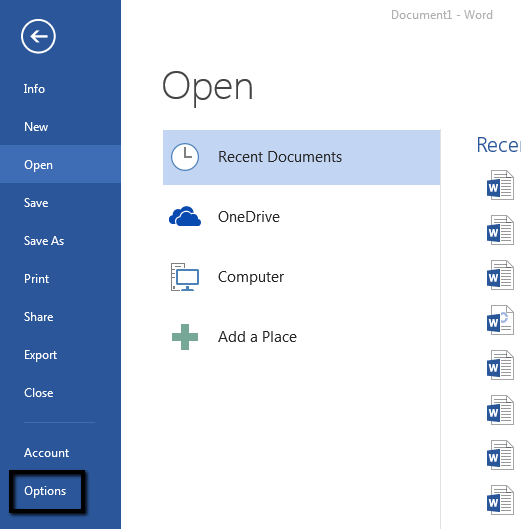
In the Word Options window,
- Click on "Customize Ribbon" in the left-hand sidebar.
- In the Tabs area on the right, check the box beside "Programmer".
- Click OK.
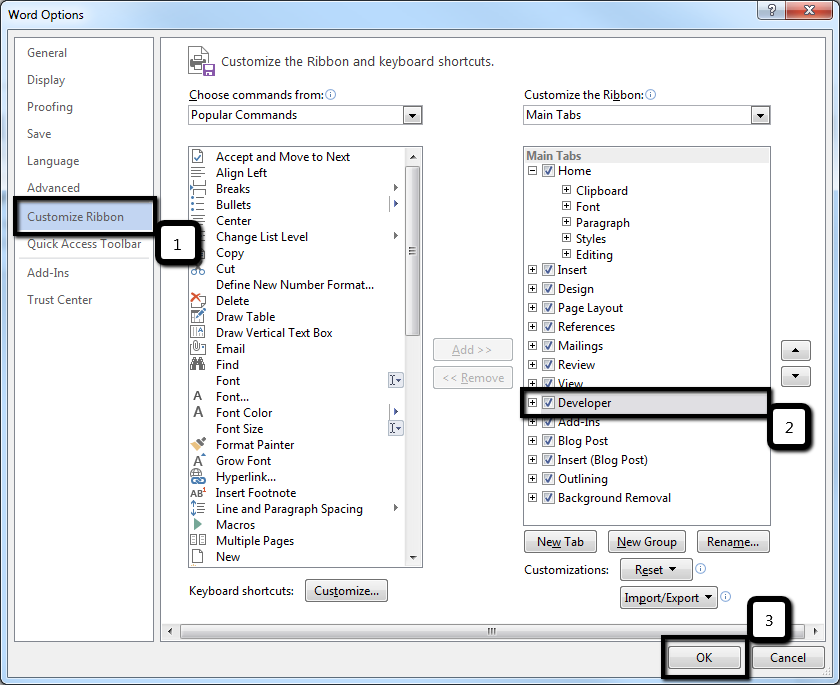
Adding Form Controls
On the "Developer" tab 1, in the "Controls" group 2 are a number of available form control fields.

Some useful class controls are:
To add together a course control to your template, click in the certificate where you want the control to go, then click on the icon for the command that you want to add.

To modify the default placeholder text on the command ("Click here to enter text" in the above instance) click "Design Manner".
To alter the Properties of the control, click "Properties".

Command Properties
Each control has options that can exist accessed by clicking "Properties" with the control you desire to change selected.
For example, this is how you will add options to a Dropdown Selection Control or specify the date format displayed when using the Date Picker Control.
Case #ane — Rich Text Content Command Properties
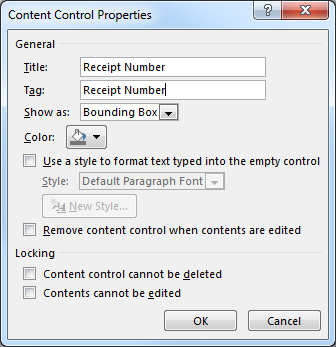 | The example to the left shows the bones Property options available to form content controls.
|
Example #ii — Philharmonic/Dropdown Selection Control Properties
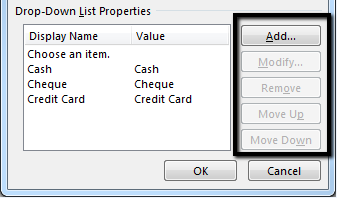 | In addition to the backdrop detailed higher up, the Dropdown List Control Properties gives you the ability to add options for the user to select from when completing the form. To add a new pick to the dropdown control, click the "Add" button. To edit an existing selection, click on it then click the "Alter" push button. To delete an option, click on it then click "Remove". |
Example #three — Date Picker Control Properties
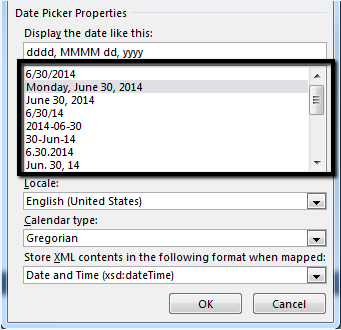 | The Appointment Picker Control Properties allow you lot to select the format of the date that is displayed when the user selects a day from the mini calendar. Click on a date format in the selection area to select information technology, and then click OK. |
Formatting Class Controls
By default, the text that is input into a control will have the same formatting equally the line that information technology was added to. To change the formatting of the text that is input into the control, highlight the command with "Pattern Way" OFF and make formatting adjustments as yous would to whatsoever other text.
To change the wording or formatting of the control'southward placeholder text:
- Turn on "Pattern Mode".
- Highlight the placeholder text and make formatting adjustments as desired.
- Plough OFF "Design Mode".
When formatting command placeholder text, keep in heed that the default styling of that placeholder may not go far easy to immediately identify as a course control. Adding a highlight or some distinctive styling to the placeholder will make it more visible in your document. When the end user types or selects content in the control, the placeholder formatting will disappear and the content will take the styling of that line in your document.
Calculation Editing Restrictions/Protection to Your Template
Protecting your template can ensure that whatsoever user or Contact who may be completing your merged documents will only be able to modify data that is in the form controls that you add to your template.
To restrict editing on your template:
- Go to the Developer tab.
- Click on "Restrict Editing"
- In the Restrict Editing sidebar on the correct, bank check the box nether footstep "2. Editing restrictions" and change the dropdown to "Filling in Forms".
- Click "Yes, Start Enforcing Protection" under step "3. Start enforcement".
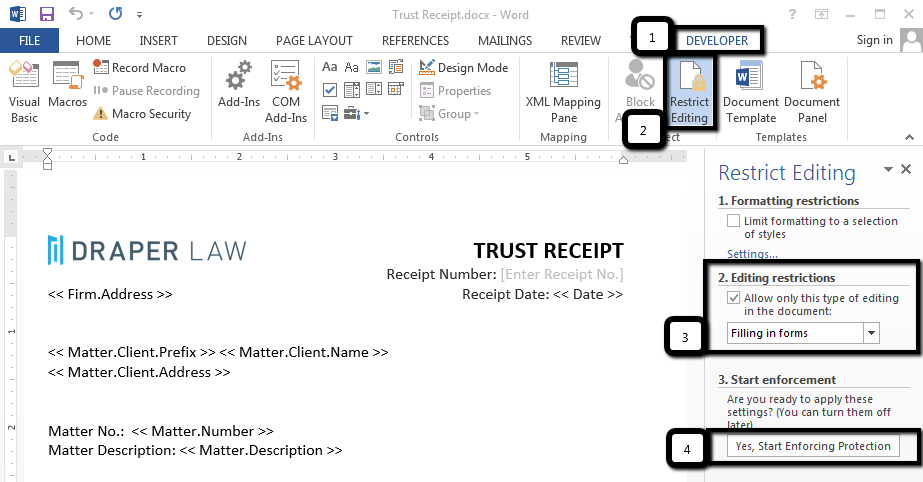
- In the Start Enforcing Protection pop-upward, enter in an optional password if you want the document to be password protected, or click OK if you do not want to add together countersign protection.
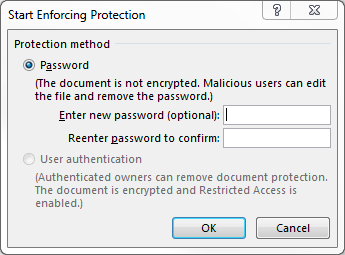
- Relieve the protected template as a new version to ensure that y'all don't overwrite your original document.
Once uploaded to Clio, the protected template will create new protected Word documents while still pulling information from Clio.
More than information is available on Microsoft.com
Advanced Document Automation Webinar
In under an 60 minutes, we demonstrate advanced MS Word techniques for adding conditional fields and form controls to your Give-and-take template. We besides demonstrate how to add editing restrictions to your template. This advanced webinar is intended for users who are already comfortable with creating Give-and-take templates for use in Document Automation.
Click Hither to view the recording.
How To Create A Tab Article Template In Word,
Source: https://support.clio.com/hc/en-us/articles/203359420-Tutorial-Creating-a-Protected-Fillable-Template-in-Microsoft-Word-for-Use-in-Document-Automation
Posted by: mitchelltheinder1941.blogspot.com


0 Response to "How To Create A Tab Article Template In Word"
Post a Comment